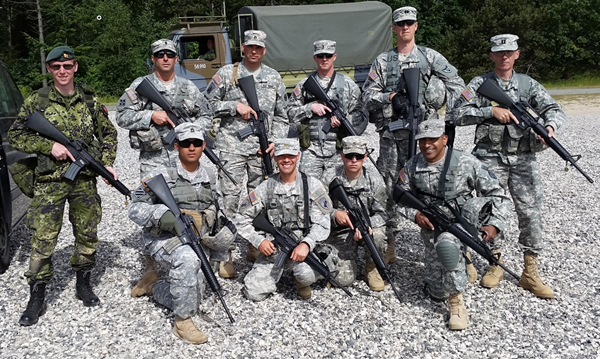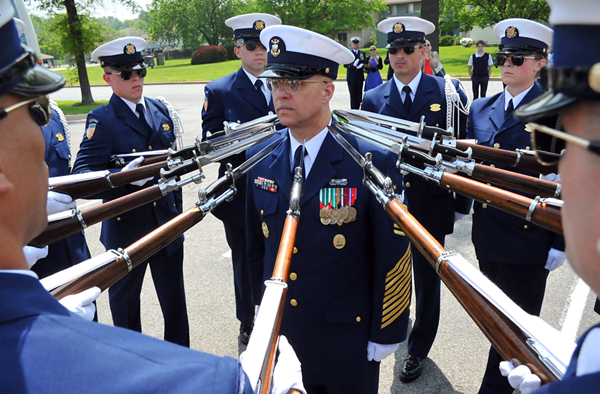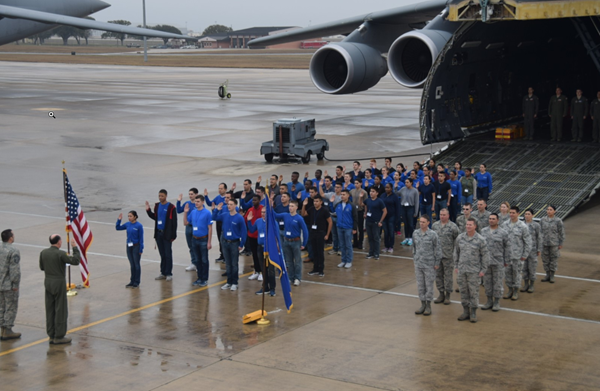Reservists generally spend one weekend a month drilling with an additional two weeks a year training.
You may have joined the reserves because it had the commitment that worked best for your situation at that time, or it allowed you to stay close to home.
But, for whatever reason, you are now wanting to make the switch from Reserves to Active duty.
There can be a lot of incorrect information out there, indicating that the process is as easy as just declaring you want to switch.
After all, you are already trained right?
Making the switch is not always as easy as it sounds, but it is possible.
Continue reading to find all of the details you need to know on how to switch from Reserves to Active Duty.
Related Article: Army Reserves Vs. National Guard
Switching From Army Reserve To Active Duty

Army Reserve members hold MOS (Military Occupational Specialty) positions similar to active duty soldiers and follow the same pay scale, (prorated for part-time status).
The biggest difference between the two is the time commitment.
Army Reserve and Army active duty members both attend Basic Training and Advanced Training specific to their MOS.
After this is completed, the Reserve members will return home and complete drill with their home unit once a month.
They will also complete an additional two weeks of training a year.
Active duty members will be stationed away from home at an Army installation located around the world.
They will work full-time for the Army.
Switching from the Army Reserve to active duty is possible, but it is not an immediate process and can take several months (and is not always approved).
The first step to switching to active duty is to meet with your local recruiter.
Your local recruiter will discuss your options as well as assist you in filling out your DD Form 368 Conditional Release from your Army Reserve unit.
A DD Form 368 must be signed by the first General level officer in your chain of command.
If you are wishing to stay in the same MOS (Military Occupational Specialty), your unit must have an open position at your pay grade.
If you wish to switch to a different MOS, you have to meet the eligibility requirements for that specialty.
There must also be training spots available for the MOS you wish to trade to.
Once your Active Duty status is granted you will receive an Active Duty report date.
You are required to continue drilling with your Army Reserve unit until the date approaches.
Upon receiving an Officer signature on your DD Form 368 you will have six months until your conditional release expires.
If your Active Duty report date is after six months, you are required to file for an extension on your conditional release.
Related Article: Military TDY: Temporary Duty Assignment Explained
Navy Reserve To Active Duty
Navy Reserve and Navy Active Duty members complete similar ratings.
Both can be Sailors or Officers.
Most reserve members will work part-time with a one weekend drill requirement a month plus two weeks of training a year.
There are options for Navy Reservist to work full time in a Navy Full-Time Support (FTS) unit, but positions are limited.
The first step to switching from Navy Reserve Component to Active Component is to check the RC to AC/FTS Quotas.
These quotas are set by the Navy and are updated monthly.
They show the open ratings in which someone may complete augmentation.
This system is used to complete Active Duty needs and provide opportunities for individuals who wish to start a full time Active Duty career.
Eligibility requirements include:
- Must be designated
- Satisfactory drill status
- Meet all rating requirements
- In age limitations
- Meet physical requirements
- No history of legal (military or civilian) issues
- Security Clearance applicable to rating requirements
Those who are eligible will complete an application in Career Waypoint (C-WAY) and submit eligibility requirements via encrypted email.
Individuals will work with their command career counselors on meeting any requirements and checking status.
The approval will be available in C-WAY and will result in signing a reenlistment contract and completing any applicable applications and forms, including DD 368.
It is possible to complete a rating conversion when switching, but more difficult to receive approval.
Air Force Reserve to Active Duty
The Air Force Reserve Unit makes up a small portion of their total workforce.
Switching from the Air Force Reserve unit to Active Duty requires an individual to first separate from the Air Force Reserves and then complete the process to enlist as Active Duty.
Separating from the Reserves will require an approved discharge, (conditional release Form DD 368).
Individuals must be in good standing in order to apply for a conditional release.
The conditional release is basically a document that states that the Reserve Unit will agree to release the individual from duty only if they are accepted for active-duty service.
Your commanding Officer’s must agree to this change and there must be a position available for you to switch.
It is not a short or easy process to switch from Air Force Reserve to Active Duty.
If you are undermanned or high-demand areas such as select pilot or EOD specialties, your chances increase dramatically.
To complete the process you will work with a recruiter in your area who will go over any qualifications you must meet for your specific specialty.
Related Article: Navy Reserve Pay For 2020
Marine Corps Reserve to Active Duty
The Marine Corps will allow individuals to switch from Reserves to Active Duty.
At times, the Marine Corps will offer bonus opportunities for those who wish to switch in areas that they need key personnel.
Those bonuses are announced on an annual basis.
When these opportunities are not present, it can be more difficult to switch, but it is still possible.
You can switch under Marine Corps Order 1130.80A, which states that reservists reenlisting on Active Duty, may do so if they are a member of the Selected Marine Corps Reserve (SMCR), Member of the Individual Ready Reserve (IRR) or Active Reserve (AR).
Those who wish to make the switch must have have a constructed age less than 35 years.
Your constructed age is found by subtracting your active duty prior service period (YY MM DD) from your actual age.
Those who are currently in an obligated Reserve Position (not IRR) will be granted positions based on availability in their current MOS, with the same pay grade.
They cannot lateral move into another MOS.
To begin the process you will meet with your recruiter.
While you can apply at any time, understand that obligated Reserve Marines do not count as an accession credit.
What this means is that you will not count into any quotas that recruiters have to reach, so you can run into issues with recruiters not putting their full effort into making your transition completed in a timely manner.
Coast Guard Reserve to Active Duty

Coast Guard Reservists can transfer to Active duty for up to five years from separation.
Switching from the Coast Guard Reserves to Active Duty is similar to any other branch of service.
The first step is to notify your command of your intent.
You will be required to fill out a form DD 368.
Next you will meet with a recruiter to go over options.
It can be easier to get into Active Duty if you are in higher-demand ratings.
For other ratings it may be very difficult.
There must be a position available for you to transfer into.
This time period can take anywhere from several months to more than a year.
It helps to stay informed on where your form is throughout the process and stay active with your recruiter.
You will continue to drill with your unit until your conditional release is approved and you reach your Active Duty report date.
Related Article: Coast Guard Reserve Pay And Benefits
Conclusion
The path to transferring from Reserves to Active Duty is similar between branches.
All branches require you to fill out a Form DD 368 and work with a recruiter.
It is possible to transfer in all branches, but specific details, such as being able to change positions or locations, vary.
This process can take longer in some positions and branches versus others.
In all cases you will work closely with your recruiter to ensure you are not only qualified, but that a position is available.
References
- Replacing Dog Tags: 6 Things You Need to Know - June 28, 2024
- Navy OAR Test Study Guide - June 24, 2024
- 10 Best Sniper Movies of all Time - June 20, 2024
Originally posted on February 28, 2020 @ 11:03 pm
Affiliate Disclosure: This post may contain affiliate links. If you click and purchase, I may receive a small commission at no extra cost to you. I only recommend products I have personally vetted. Learn more.

